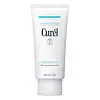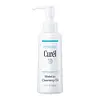What's inside
What's inside
 Key Ingredients
Key Ingredients

No key ingredients
 Benefits
Benefits

 Concerns
Concerns

 Ingredients Side-by-side
Ingredients Side-by-side

Paraffinum Liquidum
EmollientIsononyl Isononanoate
EmollientPEG-12 Laurate
EmulsifyingOctyldodecanol
EmollientPolysorbate 80
EmulsifyingSorbeth-230 Tetraoleate
EmulsifyingDimethicone
EmollientIsododecane
EmollientCetyl Dimethylbutyl Ether
Skin ConditioningPolyglyceryl-2 Isostearate
EmulsifyingPolysorbate 85
EmulsifyingIsostearyl Glyceryl Ether
Skin ConditioningWater
Skin ConditioningSorbeth-60 Tetraoleate
EmulsifyingDipropylene Glycol
HumectantMyristyl Alcohol
EmollientButylene Glycol
HumectantPEG-5 Hydrogenated Castor Oil
EmulsifyingCholesteryl Isostearate
EmollientIsostearyl Glyceryl Pentaerythrityl Ether
EmollientPEG-6 Sorbitan Oleate
EmulsifyingSorbeth-40 Tetraoleate
EmulsifyingPEG-10 Hydrogenated Castor Oil
EmollientDipotassium Glycyrrhizate
HumectantSuccinic Acid
BufferingBHT
AntioxidantTocopherol
AntioxidantPhenoxyethanol
PreservativeParaffinum Liquidum, Isononyl Isononanoate, PEG-12 Laurate, Octyldodecanol, Polysorbate 80, Sorbeth-230 Tetraoleate, Dimethicone, Isododecane, Cetyl Dimethylbutyl Ether, Polyglyceryl-2 Isostearate, Polysorbate 85, Isostearyl Glyceryl Ether, Water, Sorbeth-60 Tetraoleate, Dipropylene Glycol, Myristyl Alcohol, Butylene Glycol, PEG-5 Hydrogenated Castor Oil, Cholesteryl Isostearate, Isostearyl Glyceryl Pentaerythrityl Ether, PEG-6 Sorbitan Oleate, Sorbeth-40 Tetraoleate, PEG-10 Hydrogenated Castor Oil, Dipotassium Glycyrrhizate, Succinic Acid, BHT, Tocopherol, Phenoxyethanol
 Reviews
Reviews

Ingredients Explained
These ingredients are found in both products.
Ingredients higher up in an ingredient list are typically present in a larger amount.
Butylene Glycol (or BG) is used within cosmetic products for a few different reasons:
Overall, Butylene Glycol is a safe and well-rounded ingredient that works well with other ingredients.
Though this ingredient works well with most skin types, some people with sensitive skin may experience a reaction such as allergic rashes, closed comedones, or itchiness.
Learn more about Butylene GlycolDimethicone is a type of synthetic silicone created from natural materials such as quartz.
What it does:
Dimethicone comes in different viscosities:
Depending on the viscosity, dimethicone has different properties.
Ingredients lists don't always show which type is used, so we recommend reaching out to the brand if you have questions about the viscosity.
This ingredient is unlikely to cause irritation because it does not get absorbed into skin. However, people with silicone allergies should be careful about using this ingredient.
Note: Dimethicone may contribute to pilling. This is because it is not oil or water soluble, so pilling may occur when layered with products. When mixed with heavy oils in a formula, the outcome is also quite greasy.
Learn more about DimethiconeDipotassium Glycyrrhizate comes from licorice root.
Extracts of licorice have demonstrated to have antibacterial, anti‐inflammatory, antiviral, antioxidant properties.
One component, glabridin, has extra potent antioxidant and soothing properties. It has also been found to block pigmentation from UVB rays in guinea pigs.
Licorice Root also contains a flavonoid. Flavonoids are a natural substance from in plants. Flavonoids also have antioxidant properties.
Another component, glycyrrhizin, has been found to have anti-inflammatory and antimicrobial benefits. This may make licorice root extract effective at treating acne. However, more research is needed to support this.
Liquiritin is one of the flavone compounds found in licorice. It has been found to help lighten skin by preventing tyrosinase from reacting with tyrosine. When the two react, protein is converted to melanin. Melanin is the substance in your body that gives your features pigmentation.
Licorice root is native to Southern Europe and Asia. It has been used in traditional Chinese medicine to help with respiratory issues.
Learn more about Dipotassium GlycyrrhizateIsononyl Isononanoate is a synthetic skin-conditioner and texture enhancer. It is created from nonanoic acid, a fatty acid found in cocoa and lavender oil.
As an emollient, Isononyl Isononanoate helps keep your skin soft and smooth. This is because emollients create a barrier on the skin to trap moisture in.
Isononyl Isononanoate helps give products a velvet feel and improves spreadability.
Learn more about Isononyl IsononanoateParaffinum Liquidum is also known as liquid paraffin. It is a type of highly refined mineral oil.
Like other oils, Paraffinum Liquidum has emollient properties. Emollients help soothe and soften the skin. By creating a barrier to trap moisture within, emollients help keep your skin hydrated.
Paraffinum Liquidum does not irritate the skin and is non-comedogenic.
Learn more about Paraffinum LiquidumWater. It's the most common cosmetic ingredient of all. You'll usually see it at the top of ingredient lists, meaning that it makes up the largest part of the product.
So why is it so popular? Water most often acts as a solvent - this means that it helps dissolve other ingredients into the formulation.
You'll also recognize water as that liquid we all need to stay alive. If you see this, drink a glass of water. Stay hydrated!
Learn more about Water